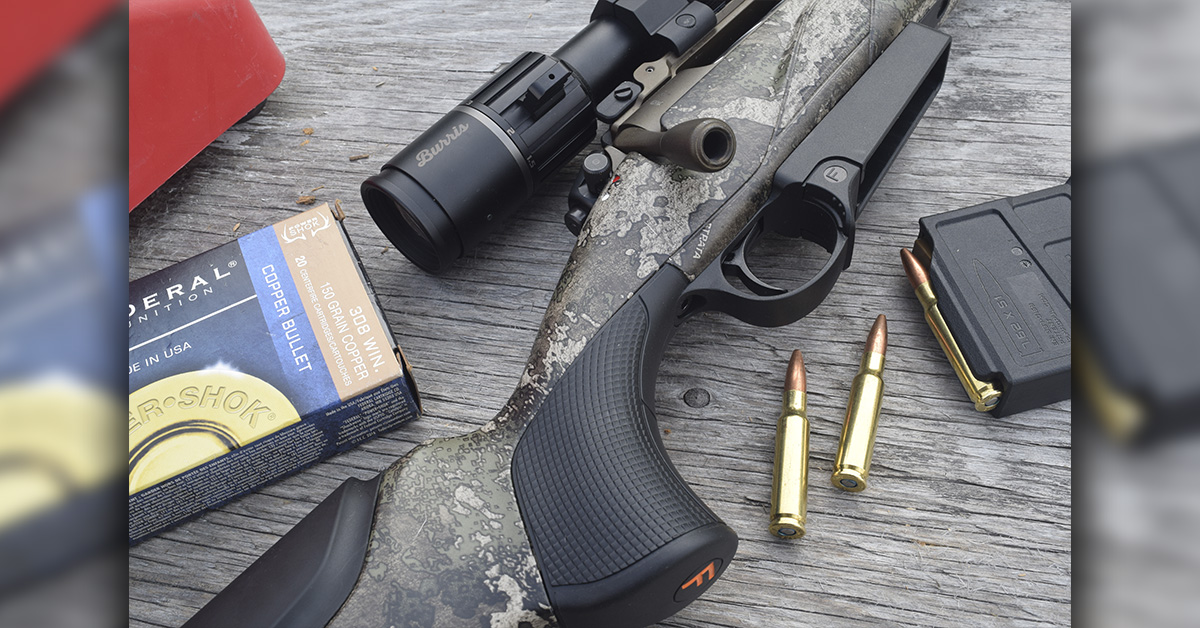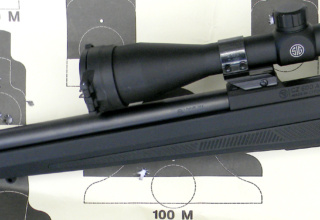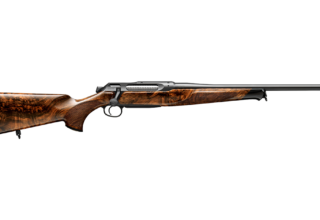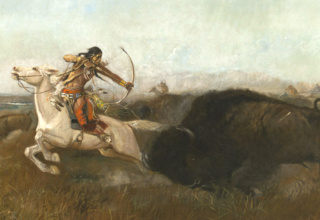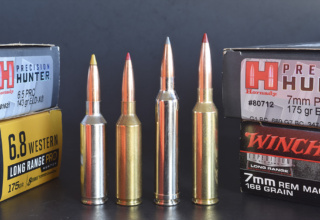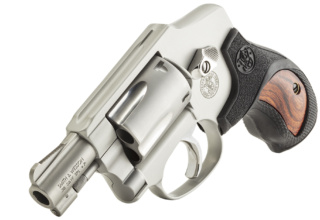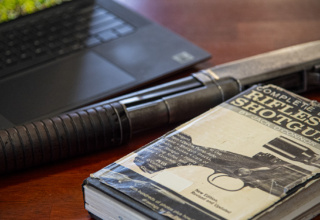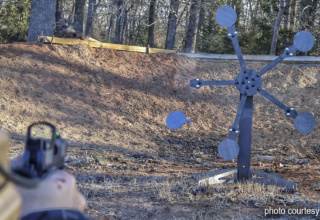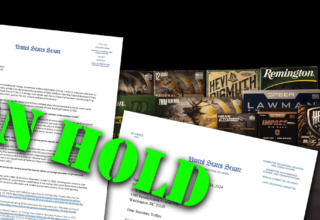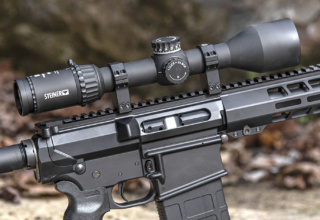The rifle is shorter than its full name: Momentum Elite All-Terrain. But it’s worth a long look!
by Wayne van Zwoll
Shorter can be better. On saddles and in trucks, and where game hides, long barrels are unwieldy.
In some circles, short rifles are known as carbines. The word comes from the French carabine — a firearm carried by light cavalry. Italian police still go by carabinieri. But in the 17th and 18th centuries, as cavalry traded blade and lance for bullets, nearly all “long arms” were indeed long! At least by today’s standards.
By the mid-1800s, the superior range and accuracy of rifled bores had put muskets on notice. The U.S. Model 1842 was our last smoothbore musket (and the first made with interchangeable parts). Fewer than 273,000 of these muskets were built in 12 years. A handful appeared as “Short Rifled Muskets.” For that day, their 33-inch barrels were short!
Our Civil War brought carbines to battle lines. The 58-caliber 1862 Richmond Carbine, built by the Confederacy, had a 25-inch barrel. Shorter, more agile rifles followed as self-contained cartridges made loading from the saddle easier. The 1859 Sharps infantry rifle had a 30-inch barrel; but the cavalry version’s was 22. The 1860 Spencer Carbine wore a 20-inch barrel. As John Browning’s Winchester-built lever-action rifles wowed hunters in the 1880s and ’90s, Short Rifle and Carbine versions sold especially well. (Typically, a Carbine had a lighter barrel. An S-shaped butt-plate replaced the Short Rifle’s crescent butt.) Their modest length, light weight, and slim profile suited them to scabbards and urgent shooting in tight places. “Trapper” models featured barrels shorter than the standard 20 inches for Carbines.
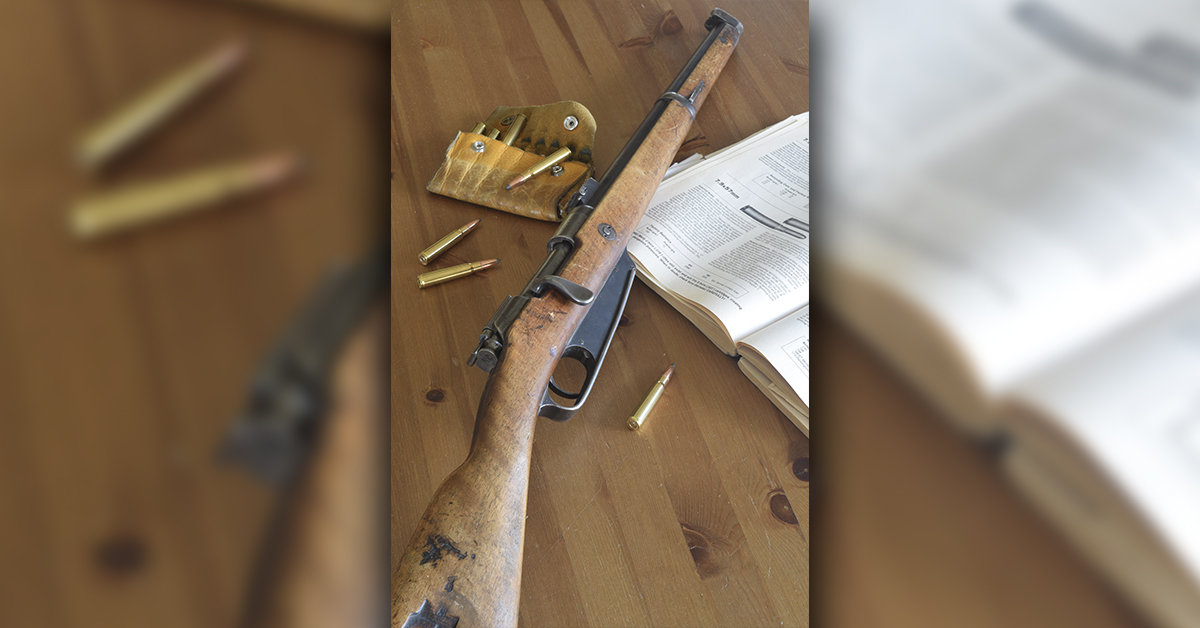
Meanwhile, in Europe, nimble rifles with sub-22-inch barrels bored for military cartridges had evolved. The 1888 Commission rifle arming came in a full-stocked carbine version with a 19-inch barrel in 7.9×57. Its slick cock-on-opening bolt had a butter-knife handle that threaded the split receiver bridge. When I was young, deer hunters snatched up surplus Swedish ’94 and ’96 Mauser carbines in 6.5×55 at giveaway prices, for “sporterizing.” The 1903 Mannlicher-Schoenauer carbine in 6.5×54 endeared itself to hunters from Alaska to Zambia. (Mannlicher and Schoenauer were engineers, by the way, not company captains. And while M-S rifles are often shown in full-length stocks, only short barrels wear them. Rifles of other brands are also stocked to the muzzle.)
About the time metallic cartridges and repeating mechanisms made news on our western frontier, Franchi started making firearms in Italy. A family-owned company from 1868 until it sold to the Socini corporation in 1987, Franchi was known for autoloading and over/under shotguns. (The 1974 Shooter’s Bible gave them 18 pages, while Beretta’s got three!) Political scandal in the 1990s undermined Socini. Cast adrift, Franchi was picked up by Beretta Holdings, a big ship that now carries many brands. One of them, Benelli USA, peddles Franchi stateside.
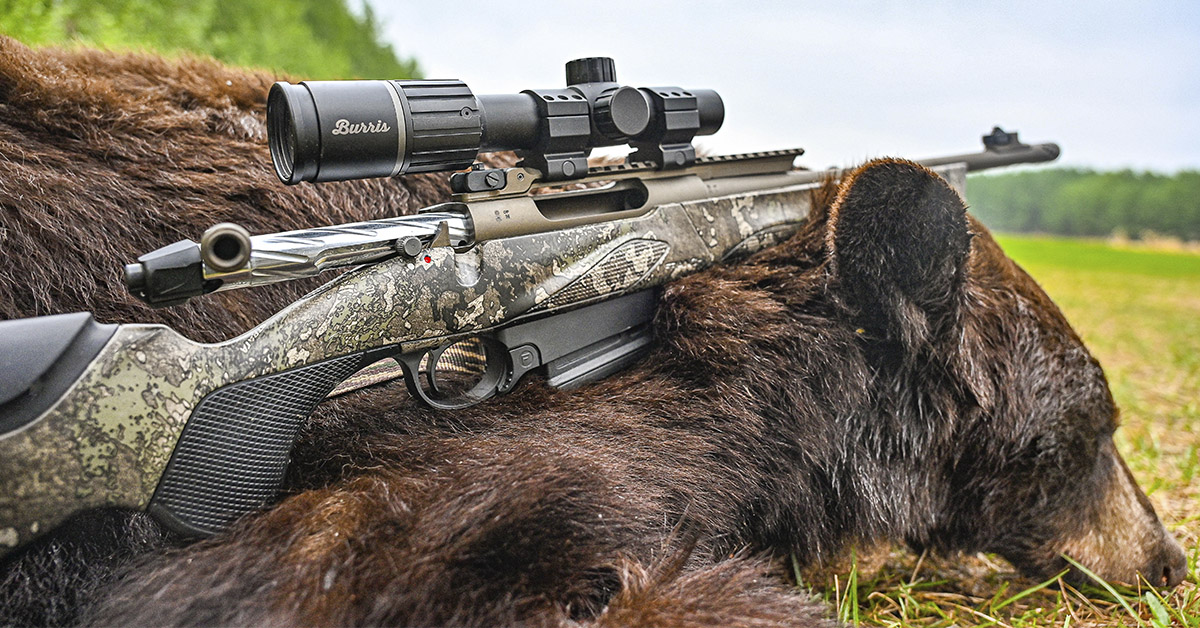
Not long ago, I shared a camp with hunters packing Franchi rifles. One was a Momentum Elite All-Terrain — a bolt-action sporter of ordinary proportions. Bronze-Cerakoted steel, camo stock finish, a detachable box magazine, and a muzzle brake distinguished it from the standard Momentum, introduced in 2018. It would down a tremendous black bear in the Alberta woods. The other rifle, new in ’22, had the same action but a shorter barrel, pivoting iron sights, and a half-length rib. Its modular stock had both M-LOK and QD studs to accept a sling. It looked like a Scout rifle.
More than 40 years ago, Jeff Cooper, crack pistol shot and founder of Arizona’s Gunsite Training Center, imagined a “general purpose rifle.” Easy to carry and point, it would strike a “decisive blow on a live target of up to [440 pounds] at any distance [from which the shooter could hit] a vital area of the target.” He figured a 19-inch barrel was “long enough to launch a 150-grain .308 bullet at 2,700 fps.” As reliability mattered, Cooper insisted on a bolt action and back-up iron sights: a bridge-mounted aperture and a post on the nose of the rib that would also hold a forward-mounted scope.
The prototype that resulted in 1984 was a modified 6 ½-pound Remington 600. It had a bipod that retracted into the forend. A 2x IER Leupold scope mounted forward on the rib left the breech exposed for loading. Cooper pointed out that a scope with intermediate eye relief also “encourages both-eyes-open shooting and allows hand-wrap carry at the rifle’s balance point.” As extending eye relief shrinks field of view, he added, magnification shouldn’t top 3x.
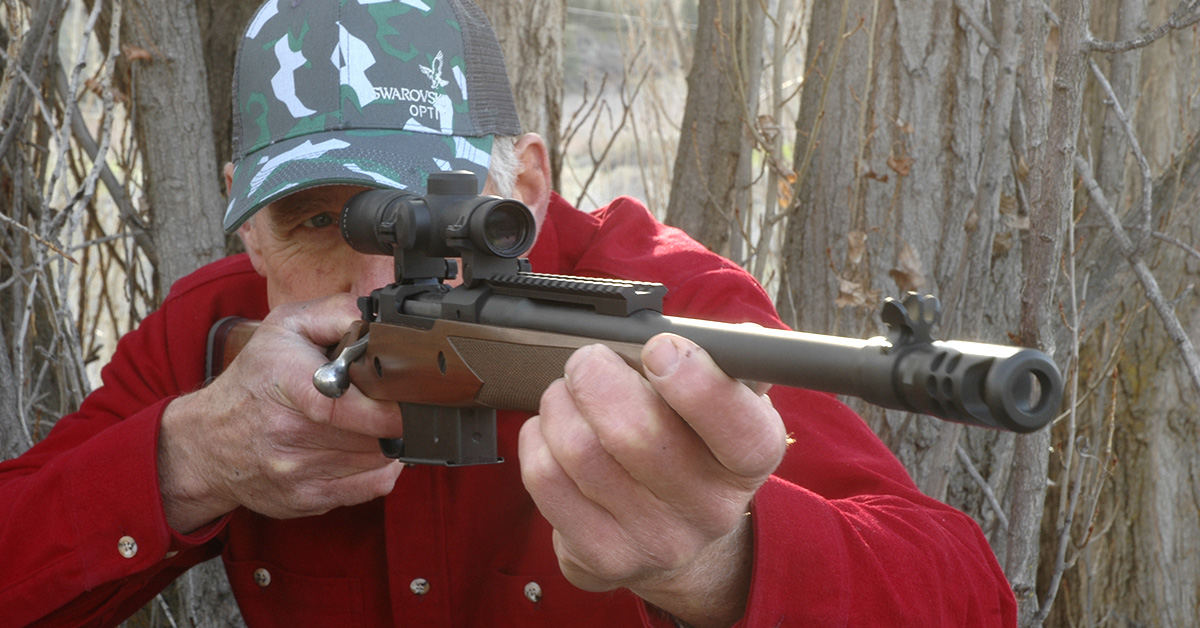
Conceived as a do-it-all weapon and hunting arm, Cooper’s Scout Rifle sparked much talk among shooters. But leggy magnums in rifles of traditional length and form were the commercial stars as the 20th century gave way to the 21st.
Cooper’s vision led to development of Ruger’s Gunsite Scout Rifle. At its 2011 debut, it brought to my mind Britain’s SMLE No. 5 Mk I “Jungle Carbine” of 1944. It was about the same length. Both had deep detachable magazines. The Ruger wore a brake, the Brit a flash-hider. At $1,200, the Gunsite Scout Rifle cost more. I recall Jungle Carbines selling for $39.95.
Sold now in .308, .350 Legend, and .450 Bushmaster, variously with 16- and 18 ½-inch barrels, Ruger’s Scout Rifle comes with a synthetic, laminated, or walnut stock. Three half-inch spacers bring the stock from 12 ¾ to 14 ¼ inches. The twin-lug bolt has a non-rotating extractor and a fixed blade ejector. Bottom metal is of glass-reinforced nylon, detachable magazines of stamped steel. A ghost-ring rear sight pairs with a banded front; the receiver is machined for scope rings; a Picatinny rail accepts an IER scope. Weight: 6 ½ pounds. While it lacks the multiple sling attachments Cooper specified, I prefer the standard QD studs provided. Ruger’s Scout Rifle cheeks quickly, points naturally, and handles recoil well.
So does Franchi’s new Momentum Elite All-Terrain. At $1,449, it’s priced just below the Ruger’s current MSRP of $1,529. After the bear hunt, I finagled range time with the Franchi back home.
The rifle’s steel is Cerakoted “Midnight Bronze.” The modular, M-LOK-friendly stock has a True Timber Strata finish. High and straight cheek rests are included — also, three nicely-contoured recoil pads to adjust length of pull. The slim grip is relatively steep but comfortable, with a subtle, appropriate flare. The forend is long enough for effective sling use. It has a pronounced flare nicely radiused to an almost-flat bottom. Grip-surface checkering helps keep the rifle in control.
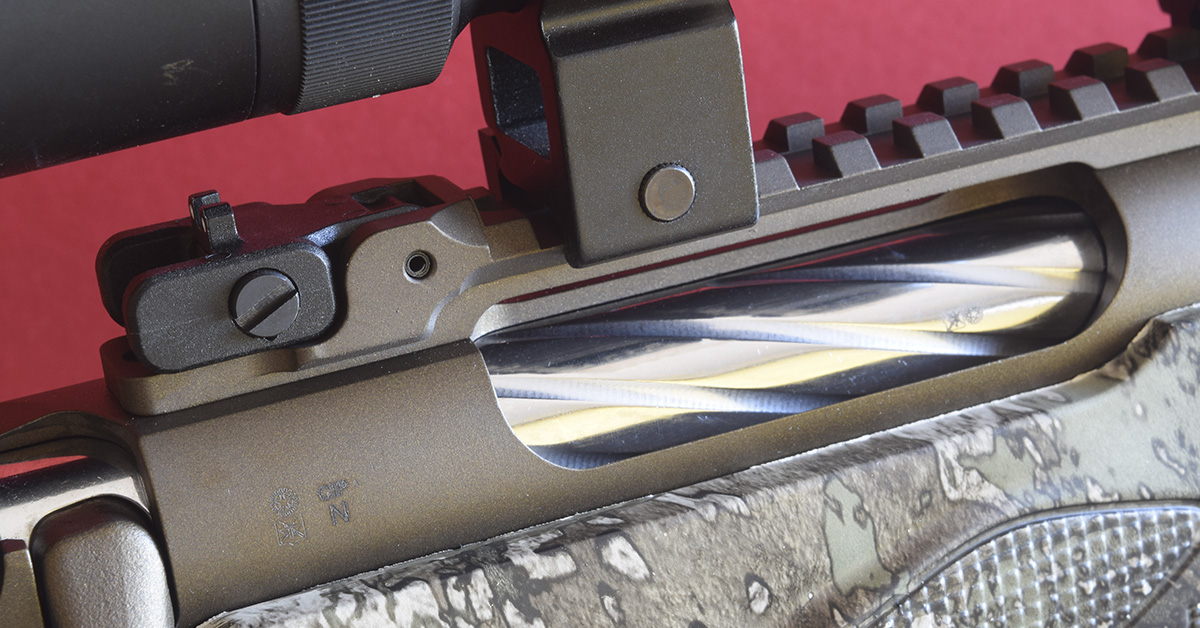
The All-Terrain’s three-lug bolt cycles smoothly. The enclosed bolt face has a lug-mounted extractor and a plunger ejector that kicks cases smartly. Feeding is from a polymer Magpul AICS magazine. It holds ten .308 cartridges. (A five-shot Magpul magazine made carrying and shooting from bags and prone easier.) It’s secured by a thumb latch accessible from both sides of the trigger guard. The two-position safety does not lock the bolt. It rocks in a short, smooth, quiet arc. The adjustable trigger is well shaped. On my rifle, it broke cleanly and consistently at 2 ½ pounds. Hooray!
Of medium contour (.700 at the muzzle), the free-floating 18-inch .308 barrel is rifled 1-in-11. It wears a brake and is threaded for a suppressor. Screwed to the receiver, the 10-inch rail extends four inches over the barrel. A pivoting rear sight is pinned to the rail. When it’s collapsed, a square rear notch with two dots uselessly brackets the front ramp! Pivoted up, the sight presents a practical ghost-ring aperture on the axis of a low-mounted scope. It is windage-adjustable, and pairs with an elevation-adjustable post that replaces a coarse blade when the front sight is pivoted up.
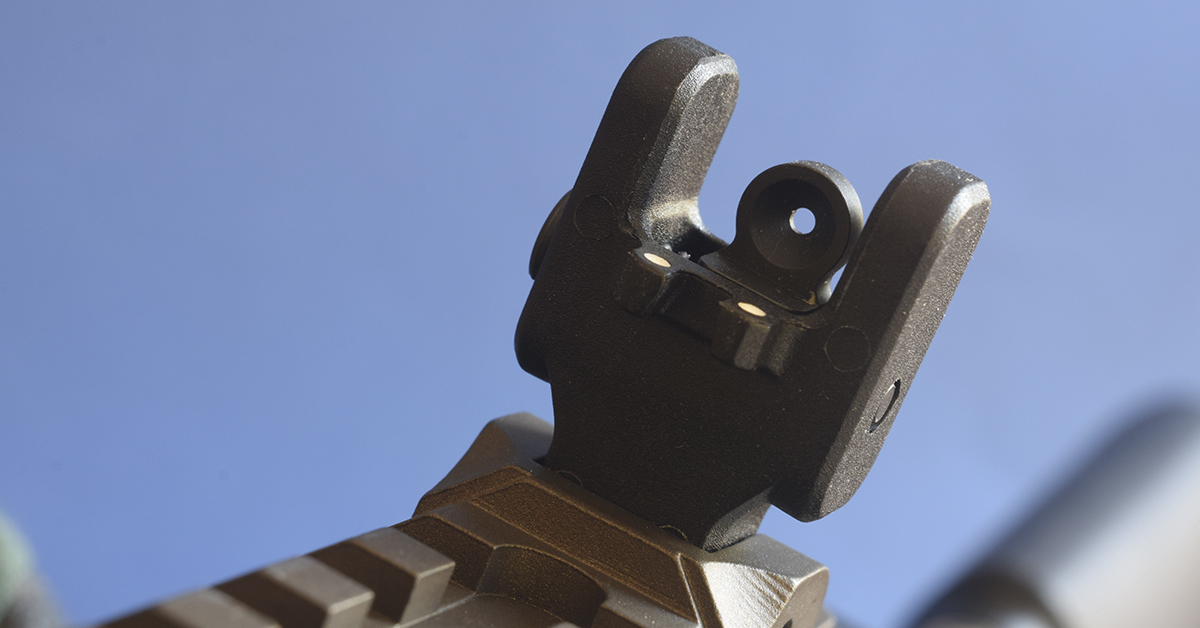
For range trials, I affixed a 1.5-4.5×24 Weaver scope of standard eye relief. Sadly, only high rings would let the ocular housing clear the rear sight. That high, the scope looked and felt awkward, nixing the agility so endearing in carbines. On bags, the high rings were no impediment to accurate shooting. I was delighted when the rifle hurled three Federal 175-grain Terminal Ascent bullets (the bear load) into a 3/4-inch group. The Franchi shot well with other ammunition, too. It was comfortable in recoil and functioned without fault.
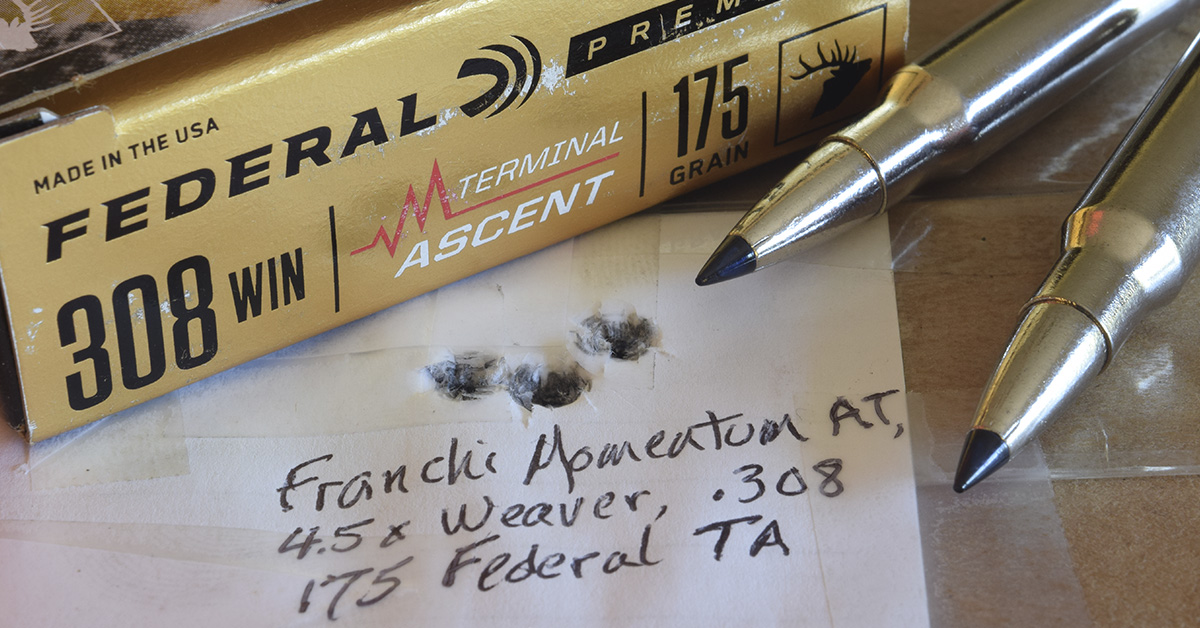
Well-balanced, exceptionally accurate, and with a fine trigger, the Franchi Momentum Elite All-Terrain impressed me. Details to change? Swapping the 10-shot magazine for a five-shot makes sense. A deep box gets in the way of my hand, snags brush and, loaded, adds weight. It prevents a low shooting position, prone or across a bench. It can be noisy, too — more exposed metal, with the leverage to rattle.
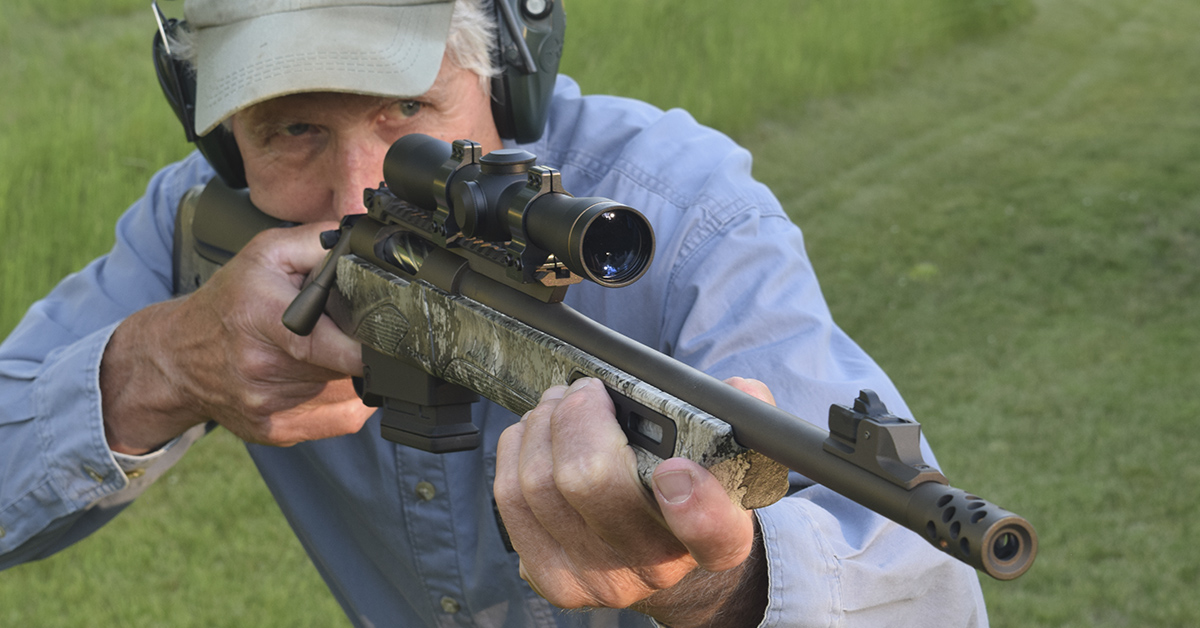
The forend is a tad generous. It fits my big hand well enough; and on bags, it resists tipping. But Alice finds it bulky in her smaller hands. Short rifles for hunting or defense are expected to handle nimbly and deliver fast, accurate shots from impromptu positions. The wand-like feel of traditional carbines like the ’03 Mannlicher-Schoenauer made those rifles very quick. They pointed naturally. While more weight, bulk, and features (Cooper’s integral bipod) can add utility, there’s a tangible cost in agility.
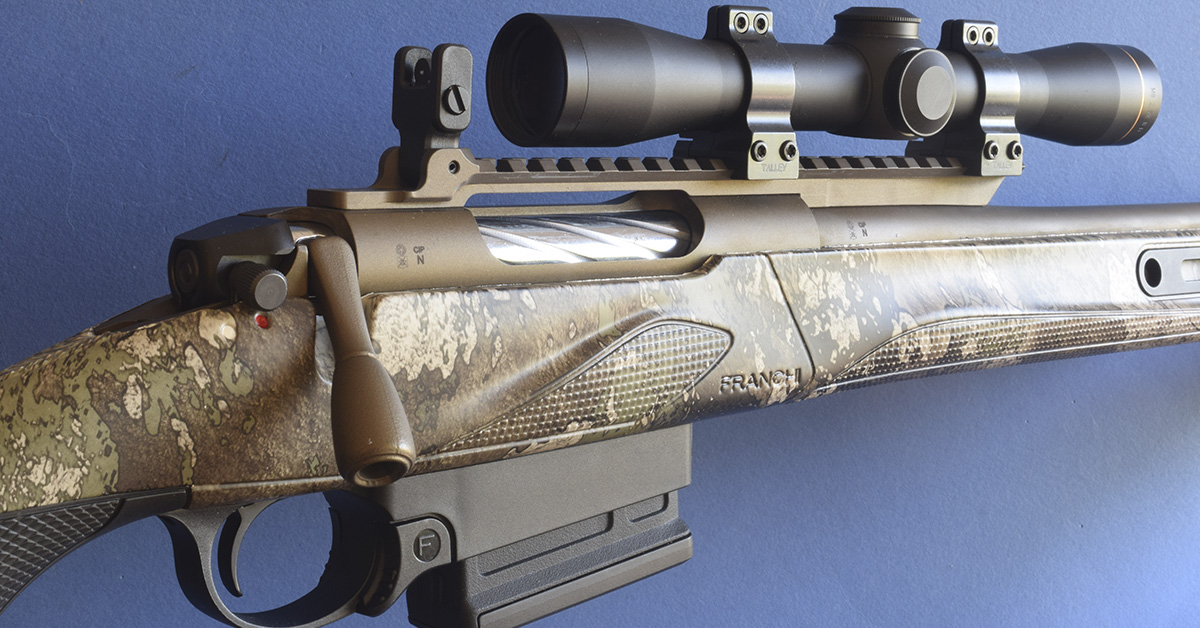
The Franchi’s action type — a low-lift three-lug bolt with enclosed face, fed by an AICS box in a round receiver — has a well-proven record. So does the twin-lug Mauser action with non-rotating extractor, controlled feed, and an easily top-loaded internal magazine. Any preference is just that: preference. Ditto stock material. The strength, durability, and weather resistance of high-quality synthetic stocks make them the clear winner — unless you’re sweet on the appearance, warmth, and tradition of walnut.
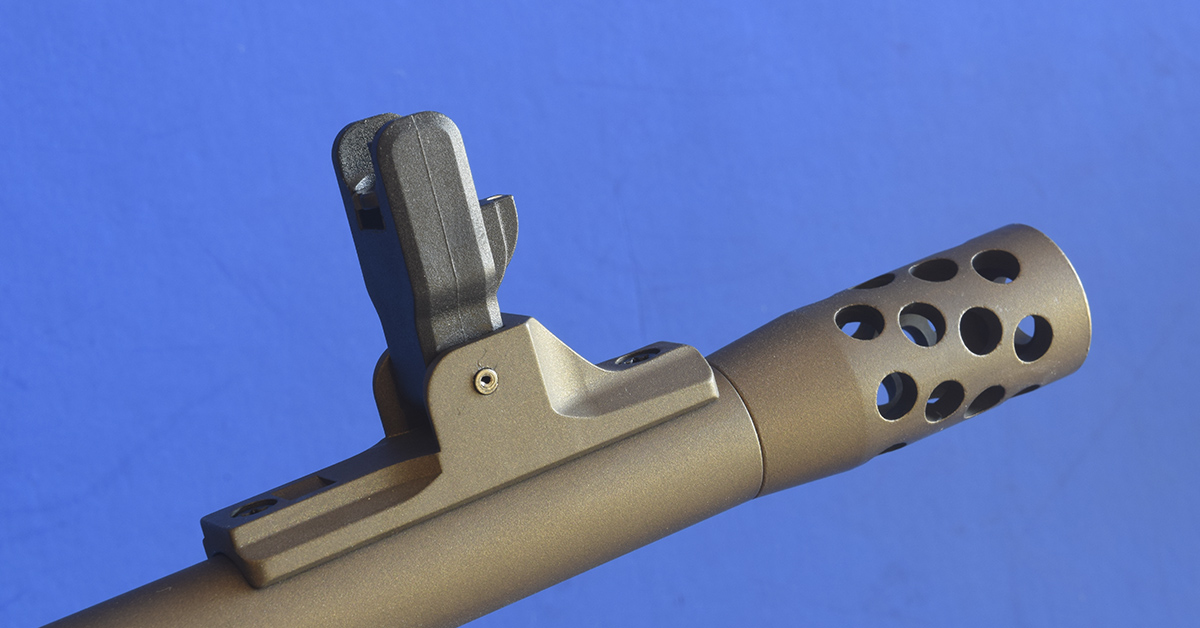
I like pivoting iron sights, low and out of the way, to be flipped up to scope height. But collapsed, the Franchi’s rear sight can still interfere with a scope’s ocular bell. Also, after I used all the ghost ring’s left windage, shots still went to the right. It seems on this rifle the front sight was not aligned with the rib.
When I first lusted for a 1903 Mannlicher-Schoenauer, they sold at gun shows for $300. They’re much more costly now, but I’ve squirreled away enough to at least consider one. Truth is, though, that no M-S carbine built before the Great War is likely to shoot as accurately as Franchi’s Momentum Elite All-Terrain. And with age, my eyes have come to rely on glass sights. Choices, choices…


